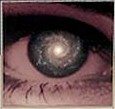 Apparently, scientific thought needs rekindling, seemingly it has run out of kindle and needs a new flame if it is to burn brighter. In steps Terence Witt with the concept of null physics. Witt has now self-published a hefty tome by the name of Our Undiscovered Universe.
Apparently, scientific thought needs rekindling, seemingly it has run out of kindle and needs a new flame if it is to burn brighter. In steps Terence Witt with the concept of null physics. Witt has now self-published a hefty tome by the name of Our Undiscovered Universe.
According to the press blurb that came with my review copy of the book, he’s a visiting scientist at Florida Institute of Technology. Now, I can find FIT on the web, but I cannot find Witt at FIT. Anyway, he puts forward a not entirely original, idea that modern physics requires a paradigm shift back to common sense thinking and a logical reconnection between observation and theory.
There is, Witt says, a disconnect between the two in our current Big Bang theory of the origins of the universe. In Our Undiscovered Universe, Witt puts forward the hypothesis that the universe is static and not expanding, and rouses various equations to explain away the red shift of distant cosmic objects and concepts such as dark matter and dark energy.
Perhaps there are almost as many loopholes in modern physics as there are wormholes and maybe it is possible to tangle up any scientific model with enough string to fill a universe. But, Witt’s is too comfortable a conclusion, that the universe does not rely on any unknowable precursors in the untestable past and will not grow old, collapse or die, but is an unimaginably large cosmic engine. Moreover, his null hypothesis suggests that “our universe actually is, the only thing it could possibly be: the internal structure of nothingness.”
So, you might ask, what is Witt’s evidence for this concept? He explains that evidence of the Null Axiom is everywhere:
- Matter and antimatter are always created in equal, yet opposite amounts whose electrical sum is zero
- Positive and negative electric fields sum to a neutral universe with zero net electrical charge
- Energy is conserved in all interactions; the magnitude of the universe’s energy has zero change
- Space is a collection of points, little bits of nothingness itself, which embodies a geometric zero – Null
- Charge must be conserved in particle interactions; the sum of the difference between charges is zero
- Momentum is conserved, so the universe’s net momentum remains constant at zero
I put a few questions to Witt on behalf of Sciencebase readers just on the off-chance that a paradigm shift really is pending. First off, I asked him to describe null physics briefly.
Null physics is a bottom-up theory built upon the solution to the ontological dilemma: why does the universe exist [instead of nothing]? The solution – that our universe is composed of nothing – leads directly to the four-dimensional geometry of which energy and space are composed. Null physics is the study and quantification of this geometry and its larger ramifications. In contrast to modern physics’ top-down, heuristic approach, which uses measurements and mathematical symmetries to build models that conform to empirical reality, null physics derives empirical reality, such as the magnitude of unit elementary charge and the range and strength of the strong force, through calculations applied to the topology of a fully known underlying geometry.
I put it to Witt that because his theory is a blend of philosophy and science, that might be a double-edged sword?
Not at all. What we currently call physics originally began as natural philosophy. Physics replaced natural philosophy because it provided an accurate mathematical description of the macroscopic scale of the physical world. This set the stage for untold advances in engineering and technology, but many of the foundational questions that natural philosophy confronted, such as why the universe exists and why matter is composed of discrete particles, were lost in this transition, leaving us with empty mathematical models. Null physics is the best of both worlds, fusing a deep understanding of physical reality (as geometry) with empirical validation. The geometry used in Null physics is derived using logic and reasoning similar to that employed by natural philosophy, but has no philosophical component in its final geometric formulation.
Of course, there are other theories around that suggest the universe did not begin with the Big Bang, I asked Witt, what makes his stand out among them?
Sweeping unification and empirical validation. Unlike other non-Big Bang theories, null cosmology is falsifiable, provides testable predictions, and gives a full accounting of the many nuanced properties of the intergalactic redshift and CMB. It also, unlike any cosmology before it (including the Big Bang), provides a logical reason for the universe’s existence and a clear framework that unifies a wide variety of known galactic properties with the large-scale universe. And in keeping with true scientific progress, the unification provided by null cosmology illuminates a number of currently unknown galactic properties, such as the vortical motion of a galaxy’s disk material.
Finally, I was still curious about the philosophical implications and asked about what this theory can tell us of our place in the universe.
It tells us everything about our place in the universe. It tells us why and how we exist on a finite scale that, because of space’s intrinsic symmetry, must exist precisely midway between infinite largeness and smallness. It tells us that the universe is, through causality and sheer size, large enough to contain its own history. In fact the universe must contain its own history, because each and every moment of our lives is integral to ultra-large-scale structure. Perhaps most importantly, null physics demonstrates that our existence is neither accident nor design – it is inevitable.
Witt’s theory also closes the door on a designer. If the universe has always existed and always will exist, then how could a creator have any role to play at all? I suspect that an atheist agenda might underlie many of the static universe theories that are springing up at regular intervals, but they could be simply replacing unsubstantiated nonsense with another form of unsubstantiated nonsense. It’s just not good enough to ask, why are we here? And to answer, because we’re here!
 The latest issue of my SpectroscopyNOW column is now online. In this issue, having sampled a little cannabis chemistry last month, I turned to cocaine, and enzymes to beat addiction, and new techniques for testing the purity, or otherwise of street heroin.
The latest issue of my SpectroscopyNOW column is now online. In this issue, having sampled a little cannabis chemistry last month, I turned to cocaine, and enzymes to beat addiction, and new techniques for testing the purity, or otherwise of street heroin.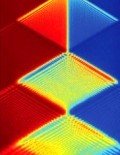 This week in my SpectroscopyNOW column, I have four new posts covering, as usual, a wide range of solutions to scientific and technical problems. First up, is the discovery that compounds found in cannabis could lead to novel antibiotics that are less susceptible to resistance than conventional drugs. Then, we have a new type of spectroscopy that allows scientists to carry out broadband analysis of artificial atoms held at temperatures close to absolute zero. Next, is word from chemists that they have developed a new type of reaction flask that can carry out reactions in the solid state. Finally, this week, we hear of testing times for biomass, where modern spectral analysis could help in the processing of old, treated wood as a renewable fuel resource.
This week in my SpectroscopyNOW column, I have four new posts covering, as usual, a wide range of solutions to scientific and technical problems. First up, is the discovery that compounds found in cannabis could lead to novel antibiotics that are less susceptible to resistance than conventional drugs. Then, we have a new type of spectroscopy that allows scientists to carry out broadband analysis of artificial atoms held at temperatures close to absolute zero. Next, is word from chemists that they have developed a new type of reaction flask that can carry out reactions in the solid state. Finally, this week, we hear of testing times for biomass, where modern spectral analysis could help in the processing of old, treated wood as a renewable fuel resource.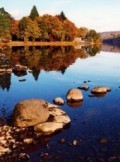 Today, is the first day of autumn, the fall, and Google is celebrating with a new leafy logo. But, why do leaves turn red in the fall? It’s all down to chemistry. Red pigments known as anthocyanins form in leaves from many plant and tree species at the same time as the green photosynthetic apparatus is dismantled by the plant. During this process nutrients containing nitrogen (N) and phosphorus (P) are re-absorbed by the plant from its leaves for winter storage and the plant’s waste products in the leaves are left behind. If these nutrients are not resorbed next year’s growth is inhibited. As the levels of green compounds in the leaf falls and anthocyanins rise so the leaves of many species change from verdant to rusty with a range of colours in between. In one sense (according to my high school biology teacher, Mrs Bradley [no relation], the trees are “urinating”, or more strictly, excreting waste in the annual fall.
Today, is the first day of autumn, the fall, and Google is celebrating with a new leafy logo. But, why do leaves turn red in the fall? It’s all down to chemistry. Red pigments known as anthocyanins form in leaves from many plant and tree species at the same time as the green photosynthetic apparatus is dismantled by the plant. During this process nutrients containing nitrogen (N) and phosphorus (P) are re-absorbed by the plant from its leaves for winter storage and the plant’s waste products in the leaves are left behind. If these nutrients are not resorbed next year’s growth is inhibited. As the levels of green compounds in the leaf falls and anthocyanins rise so the leaves of many species change from verdant to rusty with a range of colours in between. In one sense (according to my high school biology teacher, Mrs Bradley [no relation], the trees are “urinating”, or more strictly, excreting waste in the annual fall. For more information on why leaves turn red in autumn, check out this page from Wisconsin University.
For more information on why leaves turn red in autumn, check out this page from Wisconsin University. 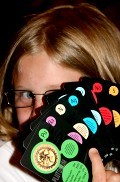 Something a little different today. A tale of family playtime, a poll, and a competition to win prizes from the RSC and the CentreoftheCell.org.
Something a little different today. A tale of family playtime, a poll, and a competition to win prizes from the RSC and the CentreoftheCell.org.
 It’s that time of the month again, so here’s the latest round-up from my column over on SpectroscopyNOW, covering a whole range of science and medical news with a spectral twist from magnetic resonance to Raman by way of fishnets and infra-red.
It’s that time of the month again, so here’s the latest round-up from my column over on SpectroscopyNOW, covering a whole range of science and medical news with a spectral twist from magnetic resonance to Raman by way of fishnets and infra-red. First up in The Alchemist this week is a tale of reactions where size really does matter! News of why “non-smokers cough” emerges from the American Chemical Society meeting this month and a new physical process has been revealed by NMR spectroscopy of frozen xenon atoms that could provide a chaotic link in quantum mechanics back to Newton’s era. Biotech news hints at a novel way to flavour your food and Japanese chemists have made a gel that undulates like intestinal muscle. Finally, this week’s award goes to my good friend AP de Silva of Queen’s University Belfast for his highly intelligent work in the development of market-leading sensor technology and intelligent molecules.
First up in The Alchemist this week is a tale of reactions where size really does matter! News of why “non-smokers cough” emerges from the American Chemical Society meeting this month and a new physical process has been revealed by NMR spectroscopy of frozen xenon atoms that could provide a chaotic link in quantum mechanics back to Newton’s era. Biotech news hints at a novel way to flavour your food and Japanese chemists have made a gel that undulates like intestinal muscle. Finally, this week’s award goes to my good friend AP de Silva of Queen’s University Belfast for his highly intelligent work in the development of market-leading sensor technology and intelligent molecules. Apparently, scientific thought needs rekindling, seemingly it has run out of kindle and needs a new flame if it is to burn brighter. In steps Terence Witt with the concept of null physics. Witt has now self-published a hefty tome by the name of Our Undiscovered Universe.
Apparently, scientific thought needs rekindling, seemingly it has run out of kindle and needs a new flame if it is to burn brighter. In steps Terence Witt with the concept of null physics. Witt has now self-published a hefty tome by the name of Our Undiscovered Universe.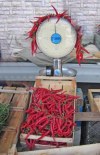 In my ChemWeb column, The Alchemist, this week:
In my ChemWeb column, The Alchemist, this week: Here is a sneak preview of the various science news items I have scheduled to appear on August 15 over on SpectroscopyNOW.com
Here is a sneak preview of the various science news items I have scheduled to appear on August 15 over on SpectroscopyNOW.com